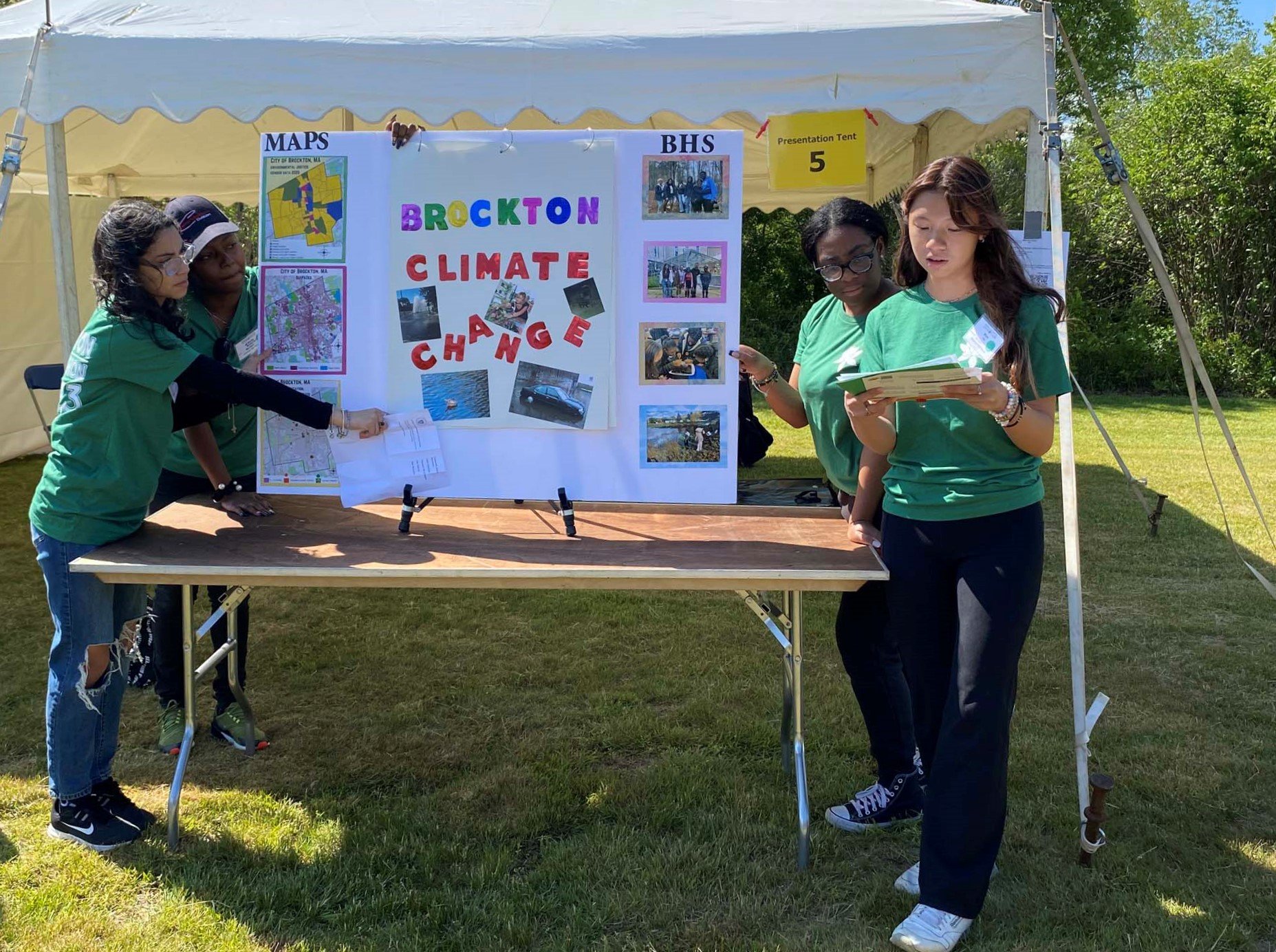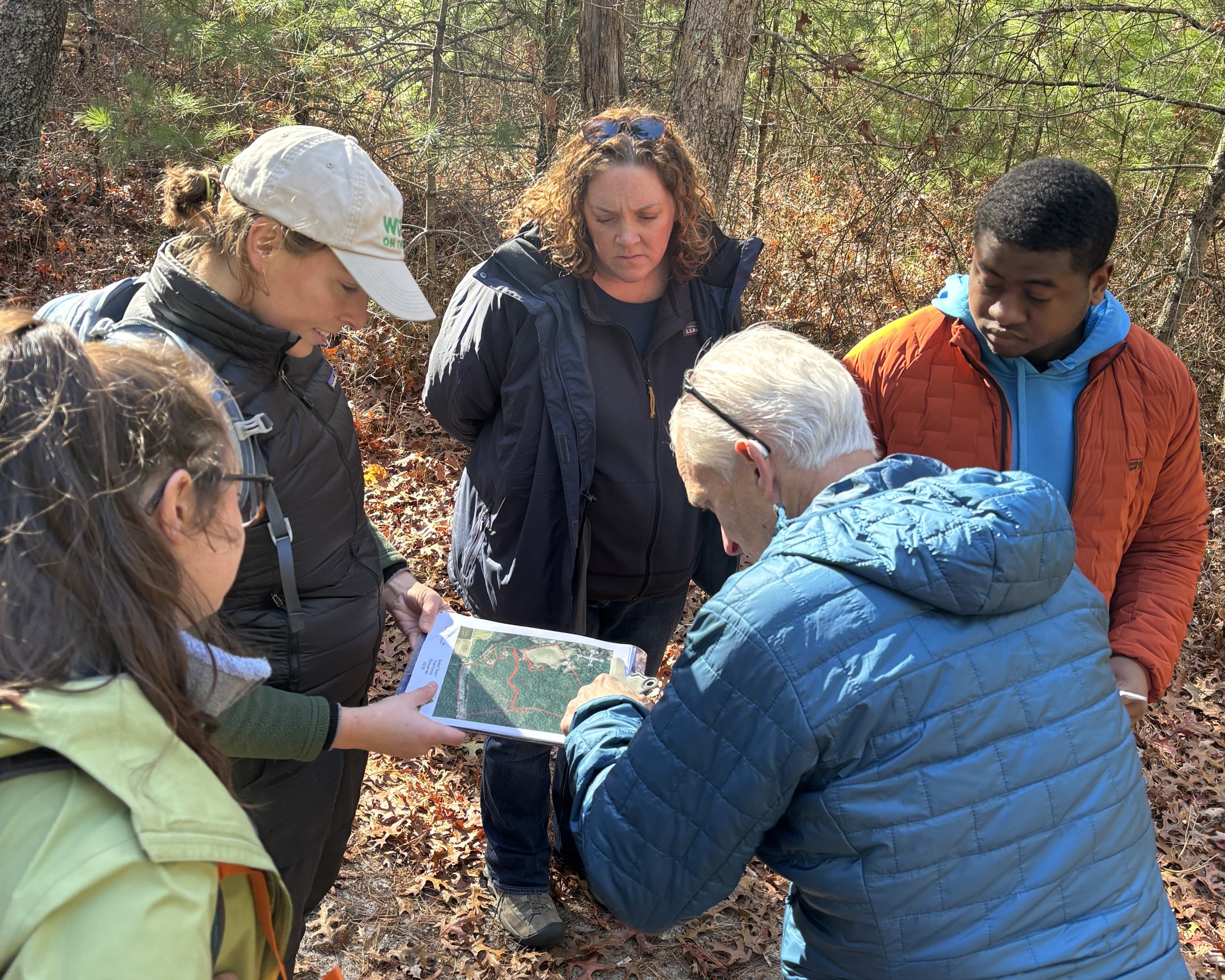By Skip Stuck, Key Volunteer
We have all played with jigsaw puzzles at one time or another. We select one based on a picture on the box that displays what the puzzle should look like when complete. Opening the box, we see pieces of color that bear no resemblance to the finished product. The work is in their reassembly. In many ways, land preservation is like a jigsaw puzzle—identifying and assembling small, seemingly unrelated pieces until they reveal a larger, cohesive picture. This is especially true in areas as long occupied as Plymouth, Massachusetts.
Until about 12,000 years ago, this land was covered by a glacier, up to a mile thick. Over the next 2,000 years, the climate warmed and ice retreated, creating a land surface composed of rocks, gravel, and sand that had been carried in the glacier. This "outwash" plain created the topography we see throughout Southeast Massachusetts, Cape Cod, and the Islands, featuring rocky hills and kettle ponds formed by huge pieces of melting ice. One of these kettle ponds, Halfway Pond, lies amid a concentration of such ponds in Plymouth, known collectively as the Six Ponds. The others include Bloody Pond, Little Long Pond, Long Pond, Gallows Pond, and Round Pond.
Early human history
Native peoples soon followed the retreating ice and utilized these new forests, ponds, and rivers to supply their food and shelter needs. For thousands of years, they and their cultures flourished. Especially important were the spring runs of blueback herring and alewives from the Agawam River, which outflows from Halfway Pond, and the Manomet (or Monument) River, which flowed from Herring Pond. These people, forebears of the Wampanoag Tribe who occupied the area at the time of European settlement (and still today; see Herring Pond Wampanoag Tribe), have been identified in historical documents by many names: the Patuxet, Comassakumkanit, Manomet and Pondville Indians. In fact, Halfway Pond got its name because it was halfway between the Dutch and Indian trading posts at Aptuxet (now Bourne, MA) to the south and the original Plymouth English settlement to the north. A trail known as the Indian Path or the Herring Way was a well-used route from Herring Pond to Halfway Pond.
While the geography suited the Indigenous people’s lifestyle of hunting, gathering, fishing, and subsistence farming, the English were slow to move out of the original colony at Plymouth Harbor. The earliest mentioned settlement at Halfway Pond is that of Nicholas Snow, who in 1637 was appointed to repair and manage a fish weir on the Agawam. Others followed, but not immediately in great numbers.
Above: The Old Douglas Homestead. In Plymouth’s Ninth Great Lot and the Six Ponds, 1710-1967, A Chronicle. “John Douglas was born in Middleboro in 1752 and married Lydia Southworth. He became a schoolteacher in 1786 and moved to Plymouth and settled in the neighborhood known as Halfway Pond. He bought the sawmill from Belcher Manter, Morton and Jonathan Wing for $750. … He built a house on the Agawam which became ‘the old homestead’ to many generations of the Douglas family until it was destroyed by the hurricane of 1938” (10). For much of the 20th century, descendants of the Douglas family lived and worked on Davis-Douglas Farm, which they sold to Wildlands Trust for our headquarters in 2012.
Cutting the puzzle pieces
When the Pilgrims arrived in Plymouth, the lands of the new colony were controlled by a group of English investors known as the Adventurers, who funded the initial colony. When their contract ran out, a new patent was granted to Governor William Bradford in 1629, giving the colony freedom to divide and sell their lands. By 1710, about 30,000 acres of land claimed by the colony was still undivided. These lands were cut up into the 10 "Great Lots." Halfway Pond and the five other aforementioned ponds lay at the center of the Ninth Great Lot. In 1713, a meeting was held that created 18 divisions of the Ninth Lot. Those granted land abutting Halfway Pond included John Harlow, Jonathan Snow, John Churchill, Nathaniel Thomas, Jabez Shurtleff, and Deacon Thomas Clark. There is no record—and it is highly doubtful—that any members of the Wampanoag Tribe were consulted in this matter.
At this point, English settlement of the area accelerated. The Halfway herring run provided an increasingly important resource for food, fertilizer, and trade. Sawmills and stave mills appeared on the Agawam River, including one built in 1781 owned by Belcher Manter and another built in 1847 owned by Thomas Pierce. In 1786, as the settlement known as Halfway Village on the pond's southwest side grew, John Douglas established a grammar school, at one time serving as many as 50 students.
By the mid-19th century, general family farming in the area began to shift toward cranberry growing. The ample water, flat lands around Halfway Pond, and availability of sand were quite agreeable to this new agricultural pursuit. As often happens, the success of the small farmers attracted investors. By the 1890s, LeBaron Russell Briggs and his brother-in-law, George Gardner Barker, had purchased most of the land surrounding Halfway Pond. George Barker soon built the family homestead, Wyanoke, on the pond. His son LeBaron Barker was a very successful grower, reputed to be the largest independent cranberry grower in America by the turn of the century. He built his mansion on a hill adjacent to the pond. For the next 80 years, all of the lands surrounding Halfway Pond remained in private hands, as cranberry bogs or increasingly as forested land.
Assembling the puzzle
Red pines on Gramp’s Loop in Halfway Pond Conservation Area. Red pine stands were planted extensively across New England between 1930 and 1960 as a timber alternative to white pines, which are susceptible to insect and fungal pests. Now, many red pines are dying due to red pine scale and pine bark beetles.
With the protection of the adjacent Myles Standish State Forest in 1916 (with improvements by the Civilian Conservation Corps in the 1930s), a vision emerged of what Halfway Pond could become if the separate holdings could be protected and united. It would take time and strategic collaborations, but the fledgling Plymouth County Wildlands Trust and its board believed it could be accomplished. In 1982, the family of LeBaron Briggs donated, with assistance from the Nature Conservancy, 242 acres called the West Shore. On the pond's east side, the Briggs family also gifted 56 acres at Gallows Pond in 1982. In 1986, Irene and Saul Taylor gifted an additional 61 acres abutting the West Shore. In 1987, the Conant family gifted 27 acres to string together more of the eastern shore. In 1998, the Nature Conservancy donated land on the east side of Halfway Pond that today encompasses the Big Point section of the property. From 1999 to 2022, a series of land purchases bolstered the protection of Halfway Pond’s western shore, including the former estate of LeBaron Barker, now the site of the Stewardship Training Center.
Wildlands could not have done it alone. MassWildlife proved to be an important partner, purchasing and protecting much of the eastern and southern shoreline. In addition to the Nature Conservancy's support in the acquisition of the West Shore property, it also owns and protects Halfway Island, home of rare old-growth forest. Finally, the AD Makepeace Company, the area's largest cranberry grower, agreed to take three of its bogs adjacent to Halfway Pond out of production, ending the danger of fertilizers and pesticides entering the pond.
All of the puzzle pieces fit into place, and the result has been the protection of 85 percent of Halfway Pond's shoreline, including over 500 acres of adjacent buffer land that now make up Halfway Pond Conservation Area. The Conservation Area, together with Myles Standish State Forest and additional protected lands, now represents the largest contiguous open space assemblage in Eastern Massachusetts. The project took over 40 years. But important things take time.
Learn More
Please visit Wildlands Trust’s online property description of Halfway Pond Conservation Area at wildlandstrust.org/halfway-pond-conservation-area—or better yet, visit its many trails yourself.
In addition, see the following resources that were used to prepare this history.
Plymouth's Ninth Great Lot and the Six Ponds, 1710 -1967, A Chronicle by Ruth Gardner Steinway.
The Herring Pond Wampanoag Tribe website: herringpondtribe.org
The North and South Rivers Watershed Association website: nsrwa.org
I also wish to thank Scott MacFaden, Wildlands’ Director of Land Protection, and Thomas Patti, Wildlands’ Communications Coordinator, for their assistance and feedback.
If you or someone you know has information about Halfway Pond’s history, we would love to hear from you! Share your insight (and/or photos!) with Communications Coordinator Thomas Patti at tpatti@wildlandstrust.org.

















